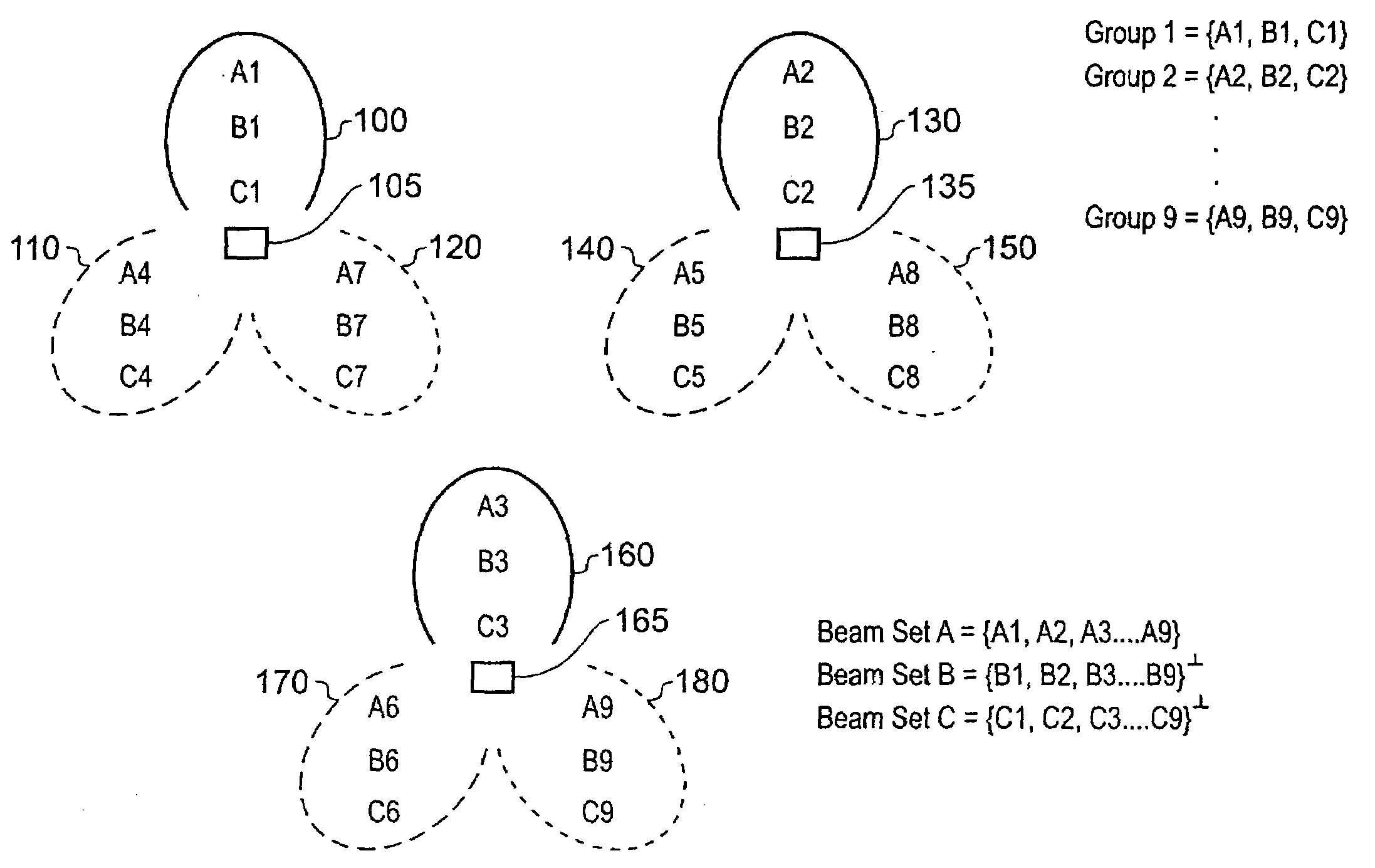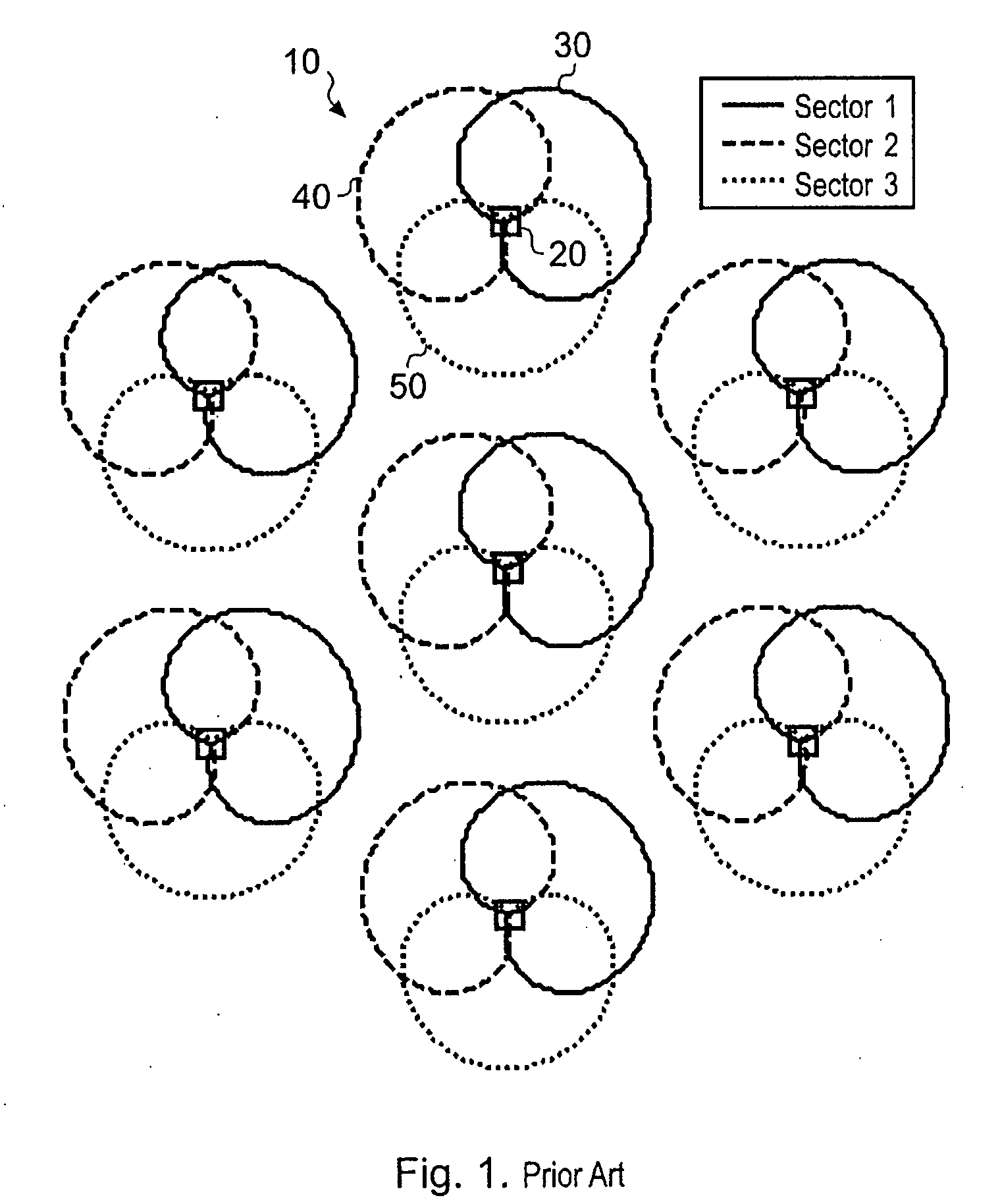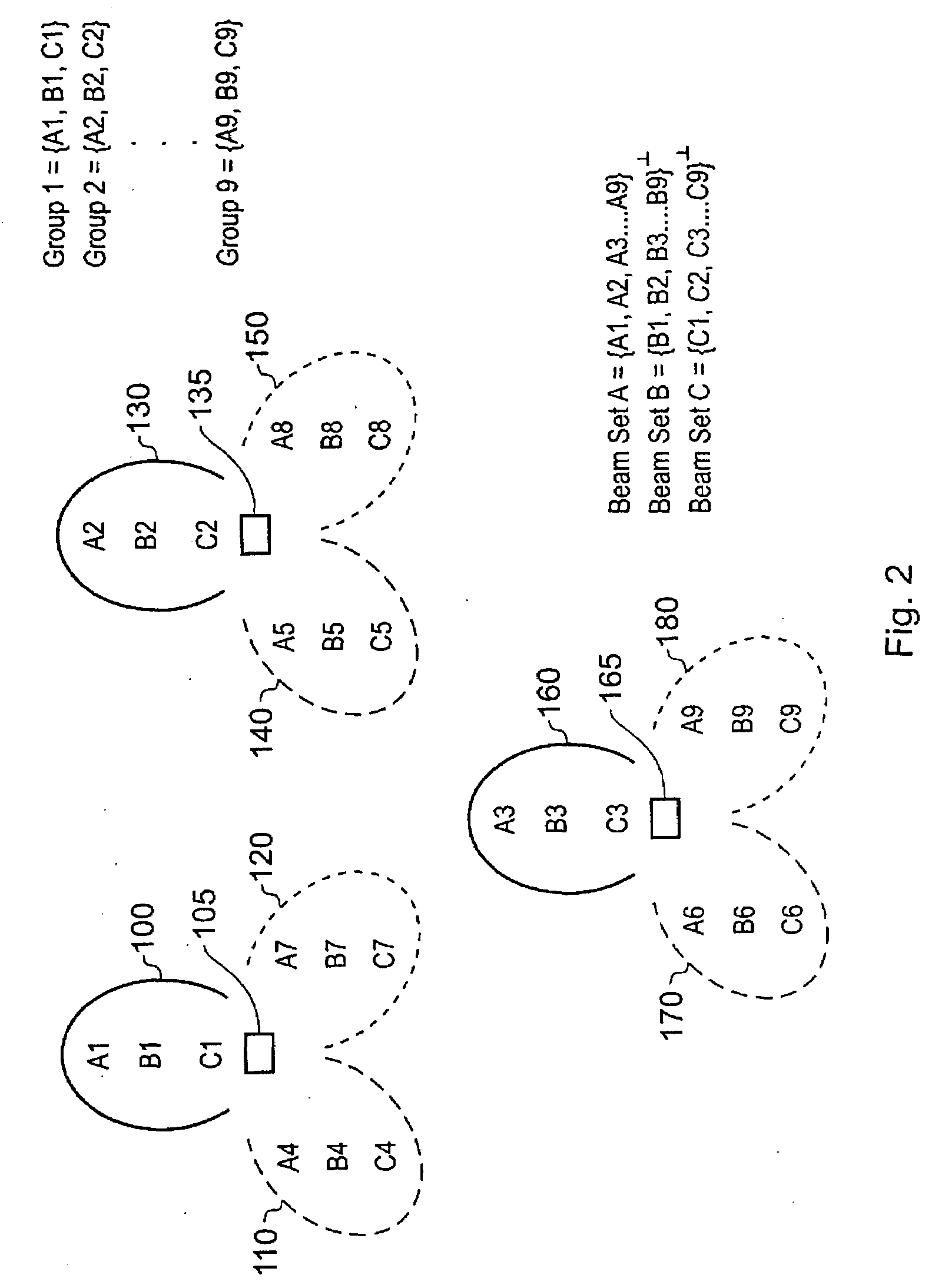Point to multipoint device for communication with a plurality of telecommunications units
a multi-point device and communication technology, applied in the field of point to multi-point devices, can solve the problems of reducing the overall system throughput, reducing the number of resources (i.e. channels) in the wireless network, and degrading the quality of the received signal, so as to reduce the average cci, the average cci is observed, and the beam switching can occur quickly.
- Summary
- Abstract
- Description
- Claims
- Application Information
AI Technical Summary
Benefits of technology
Problems solved by technology
Method used
Image
Examples
example
[0083]Let the number of antennas N=3 and the number of beams B=3. Let the random matrix A be given by
A=[-0.4521-0.9715i1.4041-1.2118i-1.2413+1.4178i-2.0185+1.0302i0.3496-1.2731i0.2494+1.3642i1.6444-0.4617i0.1980+2.1392i-0.8949-0.0644i]
SVD returns the unitary matrix U, which is given by
U=[-0.3763-0.4220i0.3891+0.4194i0.5022-0.3175i-0.5802+0.1239i-0.1419+0.5469i-0.4667+0.3333i0.5157-0.2498i0.4954+0.3287i-0.5528-0.1121i]
[0084]Thus, on frame number one the beam vector weight u1 would be used. On frame number 2 the beam vector weight u2 would be used and on frame number 3 the beam weight U3 would be used. The beam weights are given by
u1=[-0.3763-0.4220i-0.5802+0.1239i0.5157-0.2498i]u2=[0.3891+0.4194i-0.1419+0.5469i0.4954+0.3287i]u3=[0.5022-0.3175i-0.4667+0.3333i-0.5528-0.1121i]
[0085]For example on frame number 3, the data is weighted by 0.5022-0.3175i and transmitted from the first antenna. During frame number 3, the data is also weighted by −0.4667+0.3333i and transmitted from the secon...
PUM
 Login to View More
Login to View More Abstract
Description
Claims
Application Information
 Login to View More
Login to View More - R&D
- Intellectual Property
- Life Sciences
- Materials
- Tech Scout
- Unparalleled Data Quality
- Higher Quality Content
- 60% Fewer Hallucinations
Browse by: Latest US Patents, China's latest patents, Technical Efficacy Thesaurus, Application Domain, Technology Topic, Popular Technical Reports.
© 2025 PatSnap. All rights reserved.Legal|Privacy policy|Modern Slavery Act Transparency Statement|Sitemap|About US| Contact US: help@patsnap.com



